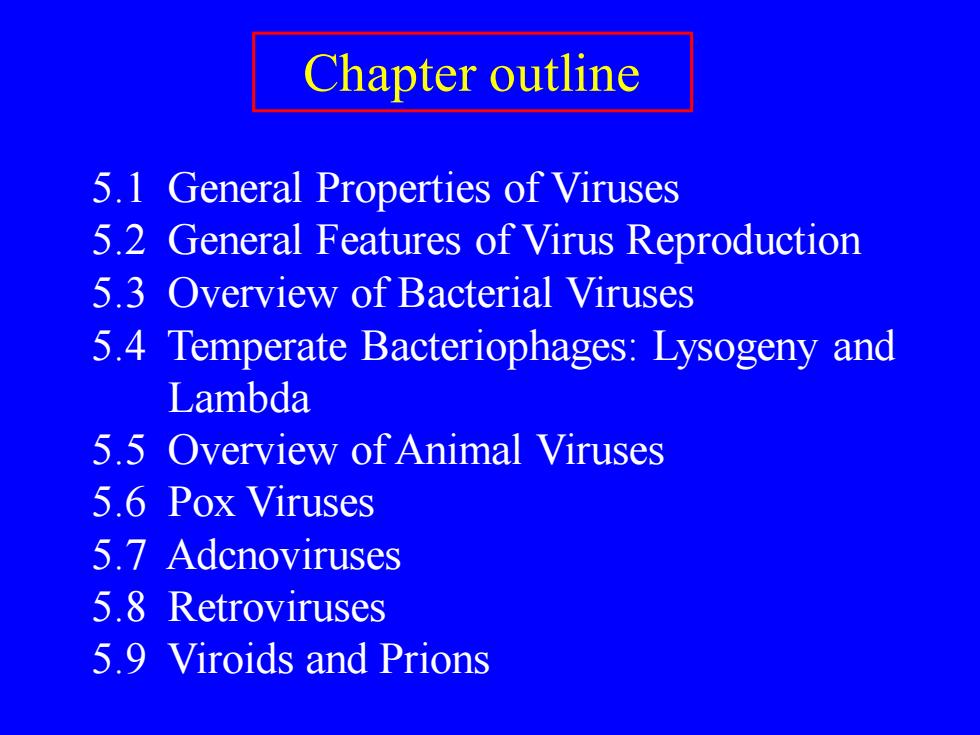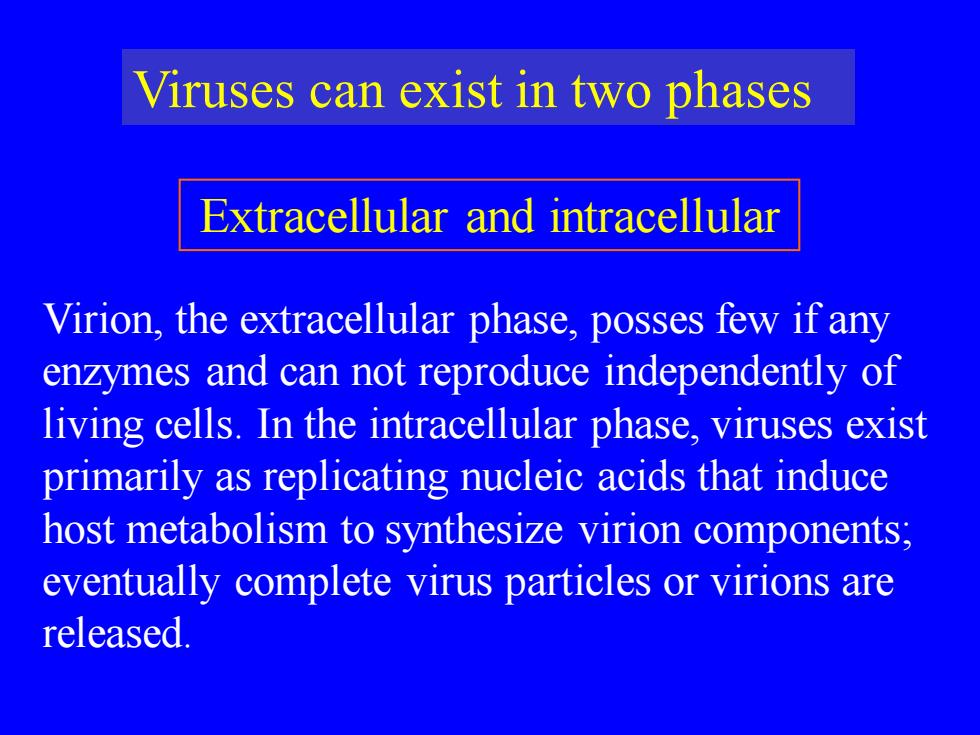
Chapter 5 Viruses
Chapter 5 Viruses

Chapter outline 5.1 General Properties of Viruses 5.2 General Features of Virus Reproduction 5.3 Overview of Bacterial Viruses 5.4 Temperate Bacteriophages:Lysogeny and Lambda 5.5 Overview of Animal Viruses 5.6 Pox Viruses 5.7 Adcnoviruses 5.8 Retroviruses 5.9 Viroids and Prions
5.1 General Properties of Viruses 5.2 General Features of Virus Reproduction 5.3 Overview of Bacterial Viruses 5.4 Temperate Bacteriophages: Lysogeny and Lambda 5.5 Overview of Animal Viruses 5.6 Pox Viruses 5.7 Adcnoviruses 5.8 Retroviruses 5.9 Viroids and Prions Chapter outline

Concepts Viruses are simple,acellular entities consisting of one or more molecules of either DNA or RNA enclosed in a coat of protein. They are reproduced only within living cells and are obligately intracellular parasites .The nucleic acid strands can be linear,closed cycle,or able to assume either shape. .Viruses are classified on the bases of their nucleic acid's characteristics,capsid symmetry,the presence or absence of an envelop,their host and other properties
Concepts •Viruses are simple, acellular entities consisting of one or more molecules of either DNA or RNA enclosed in a coat of protein. They are reproduced only within living cells and are obligately intracellular parasites •The nucleic acid strands can be linear, closed cycle, or able to assume either shape. •Viruses are classified on the bases of their nucleic acid’s characteristics, capsid symmetry, the presence or absence of an envelop, their host and other properties

5.1 General Properties of Viruses Viruses differ from living cells in at least three ways: (1)Their simple,acellular organization (2)The absence of both DNA and RNA in the same virion, (3)Their inability to reproduce independently of cells and carry out cell division as prokaryotes and eukaryotes do
(1) Their simple, acellular organization , (2) The absence of both DNA and RNA in the same virion, (3) Their inability to reproduce independently of cells and carry out cell division as prokaryotes and eukaryotes do. Viruses differ from living cells in at least three ways: 5.1 General Properties of Viruses

Viruses can exist in two phases Extracellular and intracellular Virion,the extracellular phase,posses few if any enzymes and can not reproduce independently of living cells.In the intracellular phase,viruses exist primarily as replicating nucleic acids that induce host metabolism to synthesize virion components; eventually complete virus particles or virions are released
Virion, the extracellular phase, posses few if any enzymes and can not reproduce independently of living cells. In the intracellular phase, viruses exist primarily as replicating nucleic acids that induce host metabolism to synthesize virion components; eventually complete virus particles or virions are released. Extracellular and intracellular Viruses can exist in two phases